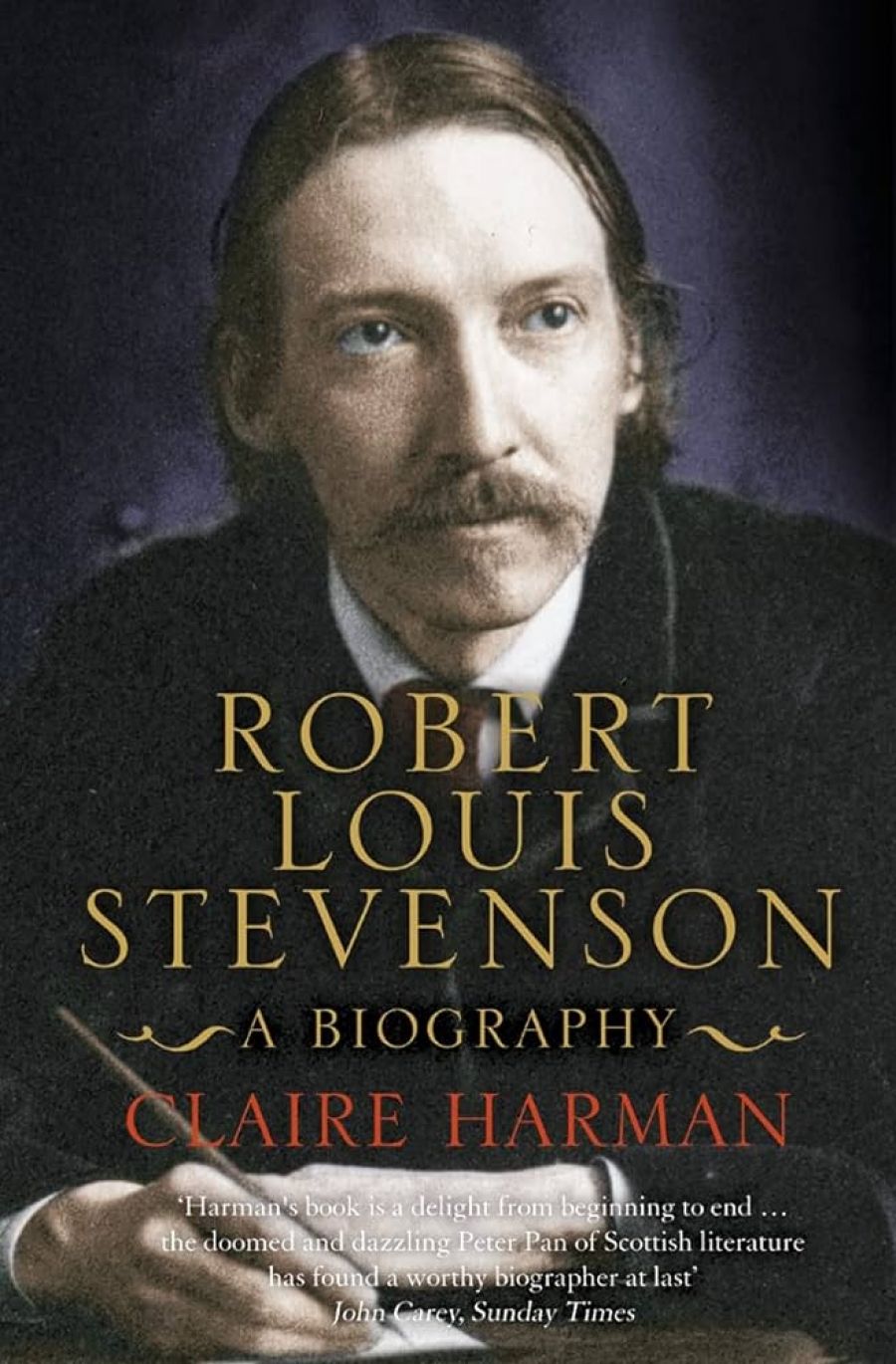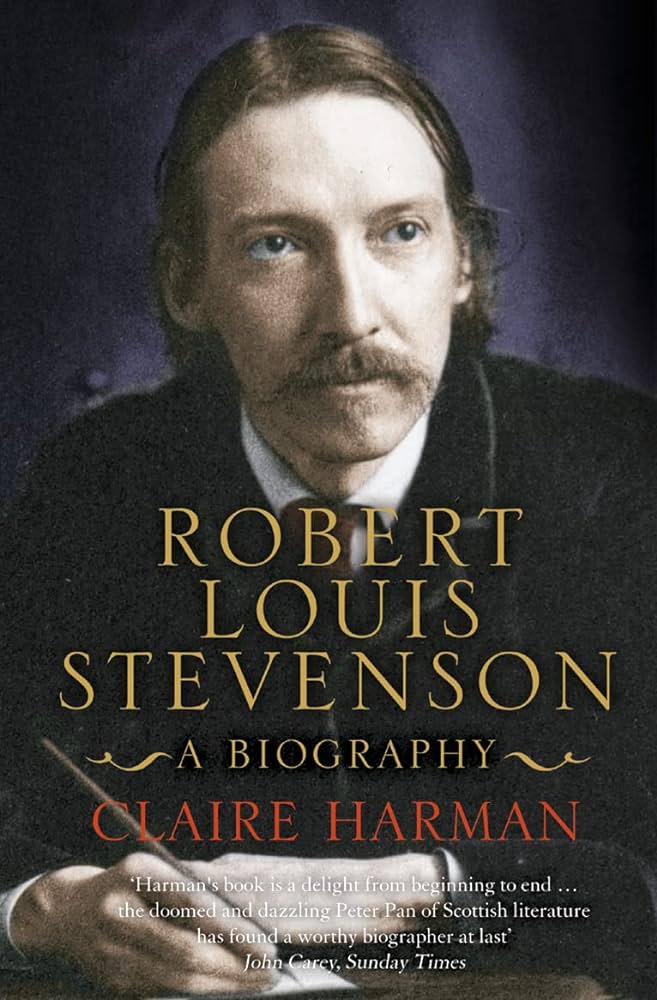
- Free Article: No
- Contents Category: Biography
- Review Article: Yes
- Article Title: RLS and ambiguity
- Online Only: No
- Custom Highlight Text:
It would be difficult to write an uninteresting life of Robert Louis Stevenson (1850–94). There is the progression from the young Stevenson, so often sick and confined to bed, to the intrepid traveller full of life and vigour as he sailed the South Seas. There is the move from cold and chilly Edinburgh to the ‘warm south’ of France and to the even warmer south of the Pacific. There is the dash across the Atlantic and America to claim Fanny Osbourne as his wife. There is the spectacular popular success of works such as The Strange Case of Dr Jekyll and Mr Hyde (1886). There is Stevenson’s death at the age of forty-four and his burial on the top of a Samoan mountain. There is even, for us in Australia, the interest of Stevenson’s visits to Sydney. On top of this wealth of incidents, biographers can draw on eight packed volumes of hugely quotable letters and a treasure trove of photographs from the earliest ones with his parents in Edinburgh to some iconic images in the South Pacific.
- Book 1 Title: Robert Louis Stevenson
- Book 1 Subtitle: A biography
- Book 1 Biblio: HarperCollins, $75 hb, 503 pp
- Book 1 Cover Small (400 x 600):

- Book 1 Cover (800 x 1200):

No wonder then that there has been a succession of biographies from the first: by his cousin Graham Balfour in 1901, through J.C. Furnas’s Voyage to Windward (1952) to Jenni Calder’s RLS: A Life Study (1980), to name just a few of the best. Claire Harman’s life of Stevenson is a worthy successor to these earlier works. It is eminently readable and entertaining, keeps the narrative driving forward even through Stevenson’s periods of disabling illness, makes good use of the wide range of documentary evidence (both written and pictorial), gives appropriate attention to those around him, including the remarkable Fanny, and includes the right amount of description of Stevenson’s works for a generation to whom his work is less familiar.
For today’s readers, there is a real attempt to understand the difficulties of Fanny’s life without heroising her, and a discussion of Stevenson’s sexuality, concluding that he seems to have had no homosexual experience but that he was immensely attractive to many men. On this same topic, Harman, rightly in my opinion, rejects the opinion expressed by some recent critics that Dr Jekyll and Mr Hyde is primarily concerned with homosexuality. As she points out, Stevenson was sexually tolerant and not likely to ‘link any specific sexual behaviour with the psychopathic Hyde mind-set’. Moreover, the text is much more effective because most of Jekyll and Hyde’s evil is unspecified – specification limits the idea of evil.
In spite of its many good qualities, there are some oddities about Harman’s biography. For one thing, I could not help feeling that Harman rather disliked and, occasionally, despised the sickly Stevenson in the earlier part of his life. Thankfully, she seems to change her attitude to her subject about halfway through when she comes to A Child’s Garden of Verses (1885) – still one of the best books of poetry for children – and a recognition that, written by an author who was ‘critically ill, bound and gagged in the dark’, it ‘can be seen as marking one of Stevenson’s finest hours, the triumph of imagination over circumstances’.
The second oddity is Harman’s constant return to the notion that Stevenson was more interested in planning and starting books than in completing them, and her tendency to present this as providing a significant insight into his character. With manifest unfairness, she notes that Swearingen’s bibliography of Stevenson’s completed and projected prose writings ‘lists 393 items, only twenty-seven of which are published, principal works’. Yet, as her next sentence acknowledges, many of the other items in fact appeared as stories or essays. In any case, what Stevenson planned is of no moment compared to what he achieved.
Harman has been perhaps too influenced by Stevenson’s own habit of comparing himself with Sir Walter Scott, ‘an impossible example to follow’, as she points out. Trying to emulate an author whose collected works extend to eighty-nine volumes (with twelve volumes of letters to boot) is indeed setting yourself up for failure, but we should remember that, if Scott had died at forty-four like Stevenson, he would have been remembered as the author of a ballad collection, some long poems and only two novels: we would not have had the twenty-two novels that followed, including Ivanhoe, The Heart of Mid-Lothian and Redgauntlet. Scott was a huge influence on Stevenson, and Harman pays lip service to this, but her few comments reveal little real knowledge of Scott’s work (and some fundamental ignorance about his career when she wrongly suggests that Scott’s Pirate came out in 1814, the life-changing year in which his first novel, Waverley, burst onto the literary scene). Again, in discussing Stevenson’s failed play Admiral Guinea (1884), she describes its similarities to Treasure Island (1883), but not the obvious parallels with The Pirate. To say that the first person narrative of The Master of Ballantrae (1889) is ‘particularly Scott-ish’ tells us little, especially as first person narrative is the exception in Scott’s novels.
These are perhaps the carping comments of a Scott scholar who believes that Scott is so important to Stevenson that a good knowledge of his work is a sine qua non for any biographer. Be that as it may, these blemishes are generally minor irritations, even for those interested in Scott and Scottish literature, and invisible to the bulk of modern readers. Harman has offered a biography that is well pitched to engage the attention of a twenty-first-century audience in a writer whose life continues to attract almost as much interest as it did in his own time.


Comments powered by CComment